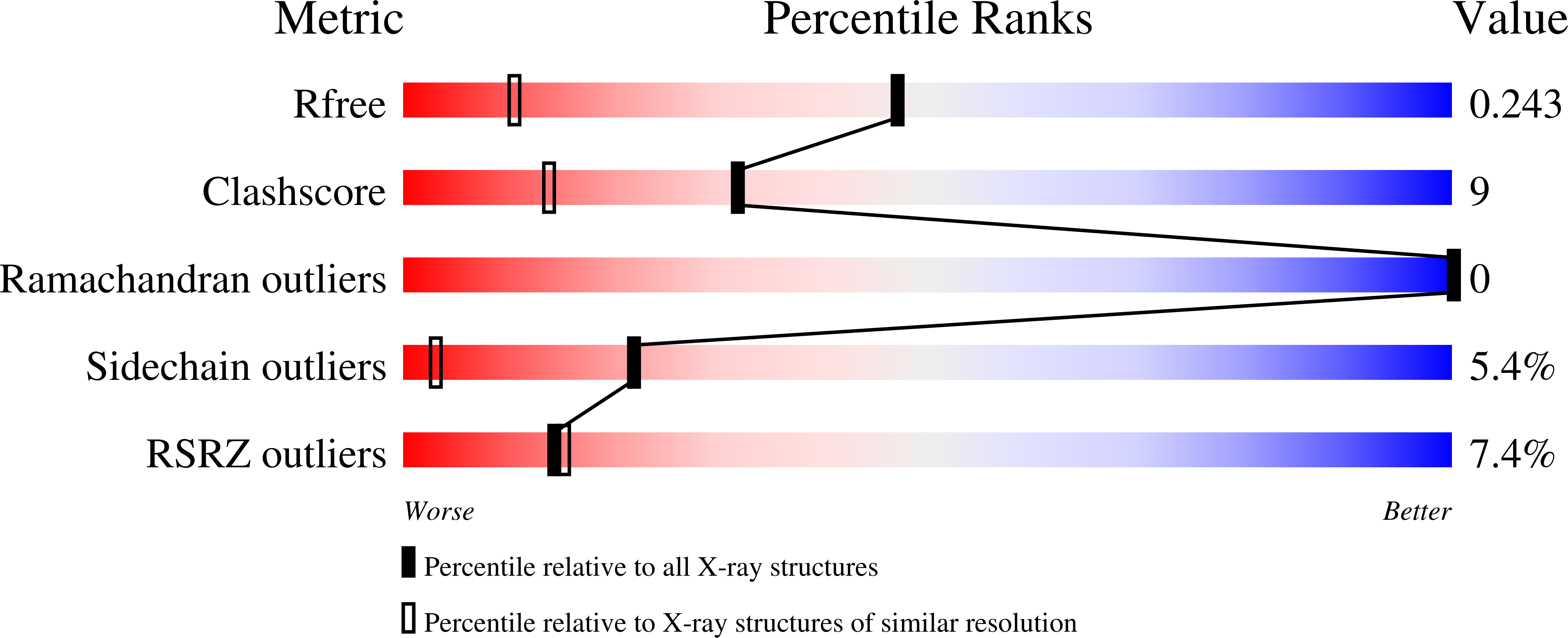Crystal Structures of the Viral Protease Npro Imply Distinct Roles for the Catalytic Water in Catalysis
Zogg, T., Sponring, M., Schindler, S., Koll, M., Schneider, R., Brandstetter, H., Auer, B.(2013) Structure 21: 929
- PubMed: 23643950
- DOI: https://doi.org/10.1016/j.str.2013.04.003
- Primary Citation of Related Structures:
3ZFN, 3ZFO, 3ZFP, 3ZFQ, 3ZFR, 3ZFT, 3ZFU - PubMed Abstract:
Npro is a key effector protein of pestiviruses such as bovine viral diarrhea virus and abolishes host cell antiviral defense mechanisms. Synthesized as the N-terminal part of the viral polyprotein, Npro releases itself via an autoproteolytic cleavage, triggering its immunological functions. However, the mechanisms of its proteolytic action and its immune escape were unclear. Here, we present the crystal structures of Npro to 1.25?? resolution. Structures of pre- and postcleavage intermediates identify three catalytically relevant elements. The trapping of the putative catalytic water reveals its distinct roles as a base, acid, and nucleophile. The presentation of the substrate further explains the enigmatic latency of the protease, ensuring a single in cis cleavage. Additionally, we identified a zinc-free, disulfide-linked conformation of the TRASH motif, an interaction hub of immune factors. The structure opens additional opportunities in utilizing Npro as an autocleaving fusion protein and as a pharmaceutical target.
Organizational Affiliation:
Department of Molecular Biology, University of Salzburg, Billrothstra?e 11, 5020 Salzburg, Austria.


















